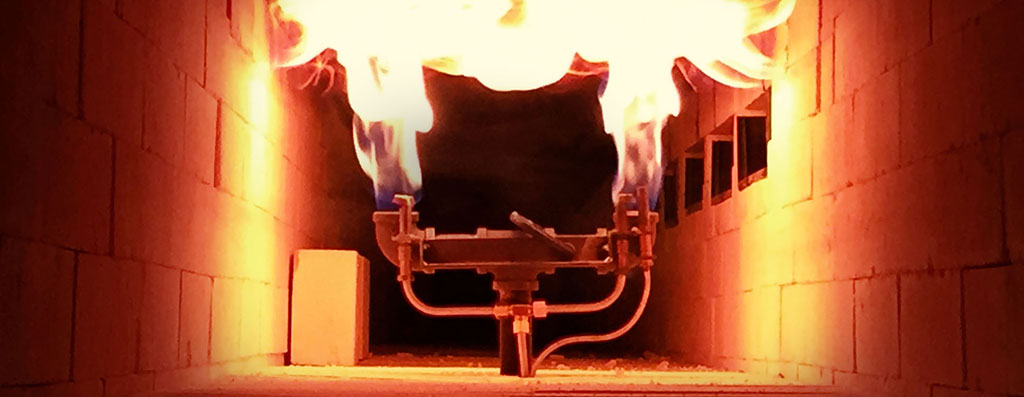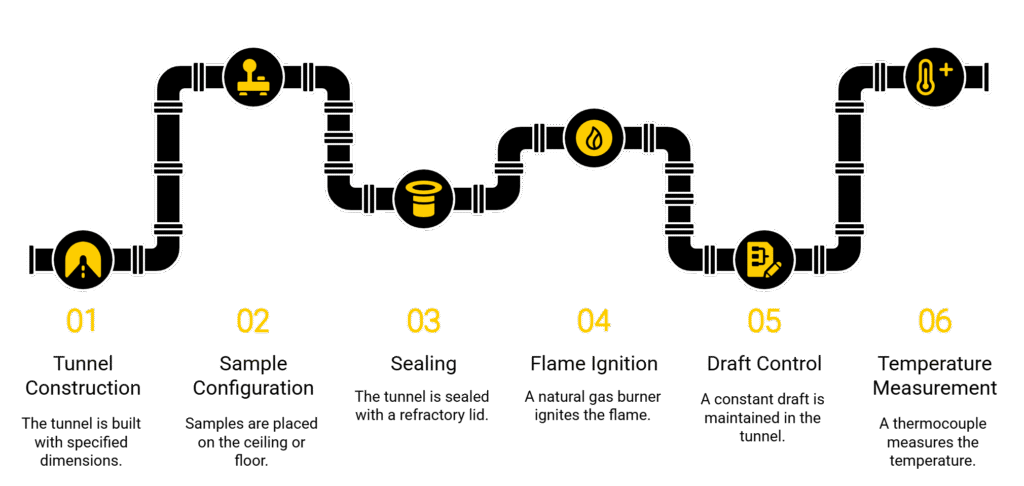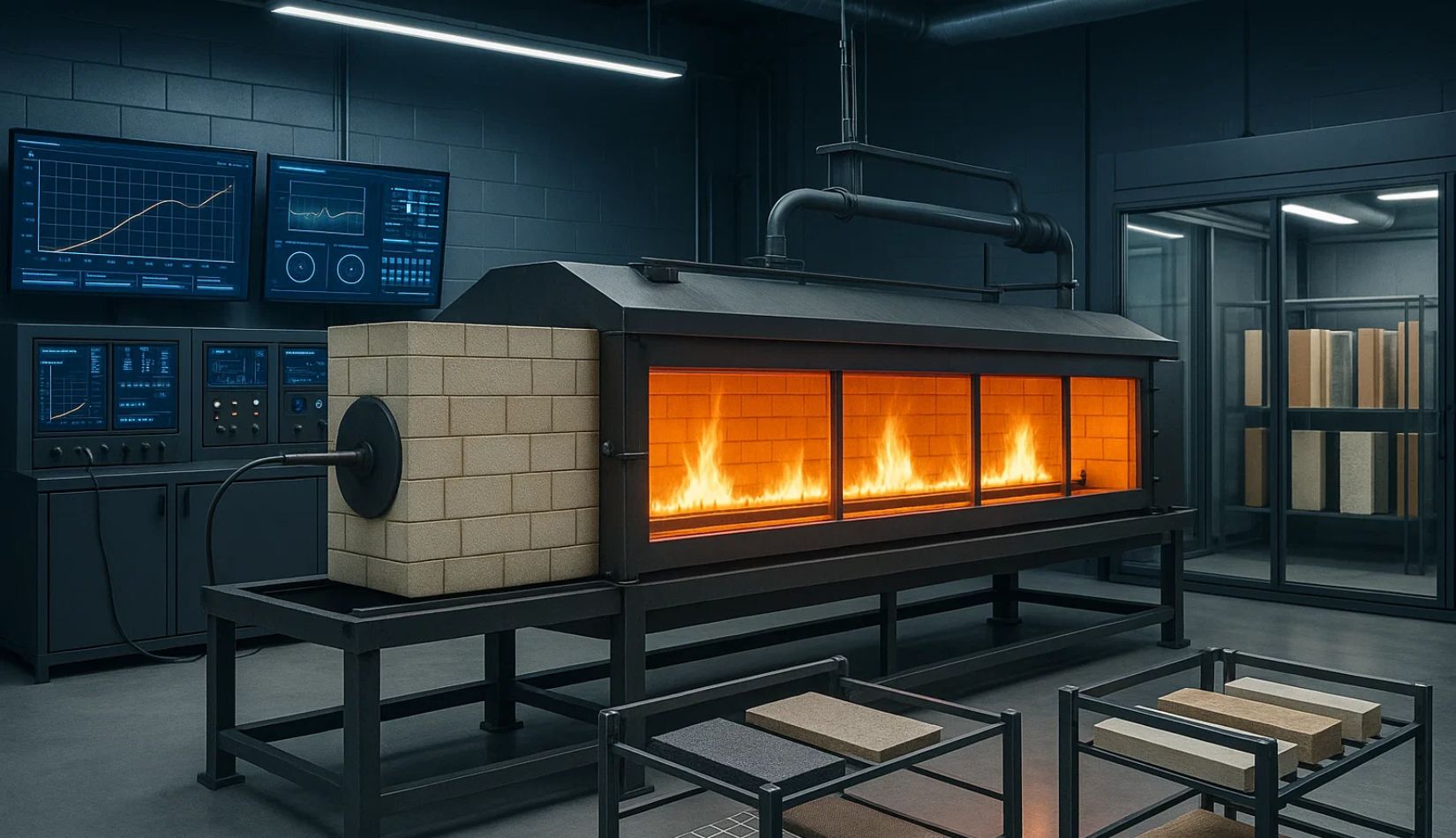Steiner Tunnel Fire Testing for Building Materials
The Steiner Tunnel is one of the most popular test methods in North America. It is used to carry out Fire Testing to determine the fire ratings of building interior walls & ceiling finishes for their ability to propagate fire, and their tendency to emit smoke. This standardized North American test determines material classifications (Class A, B, C) based on flame spread and smoke density metrics.

TUNNEL SPECIFICATIONS
The tunnel is constructed for test materials utilizing an exposed area 18 inches wide by 24 feet long and has a depth of 12 inches.
-
Sample Configuration:
-
Flat/sheet materials (≤4″ thickness) mounted on tunnel ceiling
-
Flooring, irregular shapes, or melting specimens placed on tunnel floor
-
-
Sealing: 25-foot refractory lid creates an airtight enclosure
Specimens are set on the top of the edge of the tunnel walls and are covered and enclosed by a single 25-foot refractory construction lid. This configuration is for flat or sheet samples in thickness up to as much as 4 inches.
Other Test Specimens?
Other test specimens, such as flooring and other shapes, are set on the tunnel floor. Specimens that melt or drip or cannot be adequately supported are also tested on the tunnel floor.
A controlled Natural Gas burner delivers a 90kw (300,000 BTU) flame throughout the test, producing a 4½ foot flame as an ignition source to the specimen.
An automated system controls a constant inlet draft of 240 feet per minute and is maintained for the 10-minute duration of the test.
In addition, a Thermocouple is positioned in the tunnel, at 23 feet from the flame source, to provide temperature information during the test process.
Measurements Recorded:
-
Flame progression distance (determines Flame Spread Index)
-
Smoke density via photometric system (Smoke Developed Index)
Material Classification System
| Class | Flame Spread Index | Smoke Developed Limit |
|---|---|---|
| A | 0-25 | ≤450 |
| B | 26-75 | ≤450 |
| C | 76-200 | ≤450 |
Materials exceeding FSI 200 fail classification: Understanding flame spread ratings
Applications and Limitations
-
Wall/Ceiling Materials: Drywall, wood panels, insulation
-
Flooring: Carpet, vinyl, rubber (tested on tunnel floor)
-
Exclusions: Materials that drip/melt require modified mounting
Does not assess structural integrity under fire
Critical Consideration: Placement (ceiling vs floor) significantly impacts results
ASTM E84 vs Canadian S102 comparison
Testing Standards Reference: ASTM E84-23a governs Steiner Tunnel methodology
Official ASTM E84 Documentation
Request Fire Testing: Submit material samples for Steiner Tunnel evaluation
Contact fire testing team
Get to know more about our Fire Testing Services





